Can you shoot an arrow without fletchings? Yes, but it’s not something you want to do. Fletchings serve an important role in steering the arrow during flight. Also, fletching helps to stabilize the arrow in flight and keep it on track. Shooting an arrow without fletchings can cause the projectile to become unstable and inaccurate. But what type of fletching should I choose for my arrows? I hear you ask.
There are many arrow fletching types are available on the market, and the kind you select will depend on several things such as your intended use for the arrow, your skill level, the distance of the target, and the type of bow you are using.
Before we get into those factors in detail, let’s discuss the common types of fletching for arrows available and what each type offers.
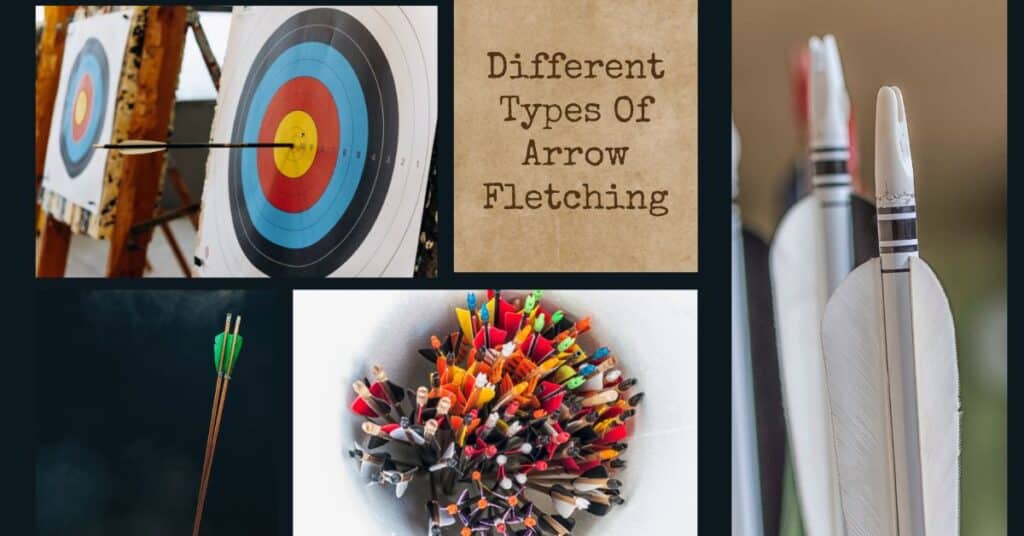
Arrow Fletching Types Based On Turn: How They Matter In Hunting Or Shooting Arena
Arrow fletchings can be categorized based on the turn, which refers to the angle or degree of the fletch on the shaft. There are three main types of fletchings:
- Straight
- Offset and
- Helical.
Straight Fletchings
The most common are straight fletchings and the fletchings found on most already fletched shafts. This type of fletching has a straight angle to the shaft and is best known for speed. However, it is best suited for speed and less suitable for stabilization.
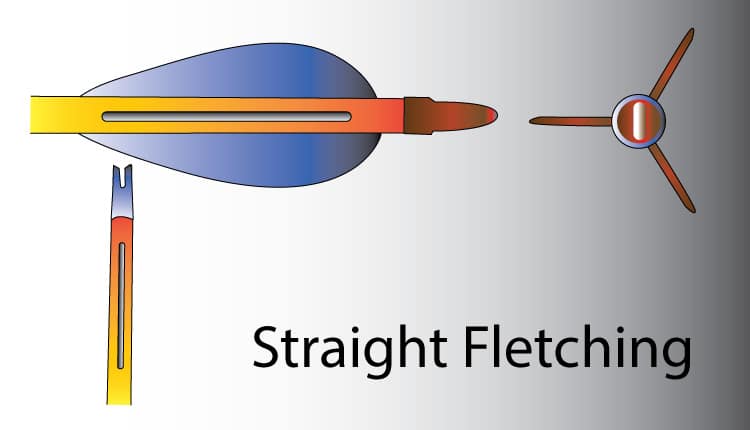
Advantages Of Using Straight Fletchings
- Offers the fastest flying arrows of the three types of fletchings
- Has the least amount of air resistance than the offset and helical type fletching.
- You can use Straight fletching with almost any kind of arrow rest.
- Does not have a lot of clearance problems to deal with
Drawback Of Using Straight Fletchings
- Offers speed at the expense of arrow stabilization which can impact accuracy and is thus not suited for long-range shooting.
- Those who prefer speed over accuracy can use straight fletch considering the mechanical broadhead.
- It is best suited for a properly tuned compound or crossbow for hunting.
Offset Fletchings
The offset fletching has a slight turn on the fletch that runs from the front to the back. Due to this fletch, this type creates arrow spin, which helps in arrow stabilization. Indeed this type is better at arrow stabilization than straight ones.
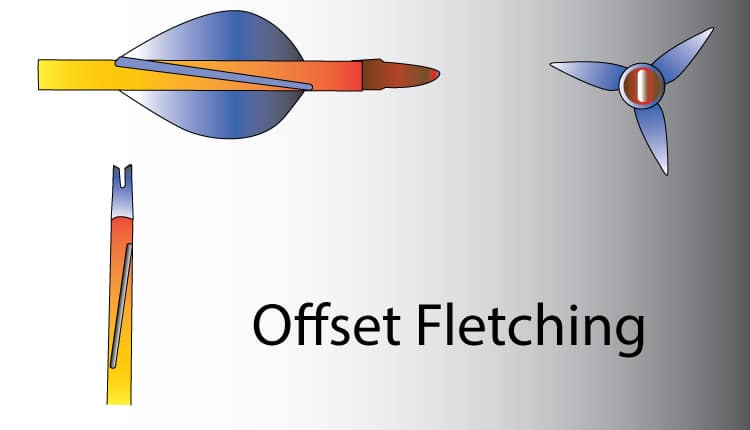
Advantages Of Using Offset Fletchings
- Offers a better broadhead stabilization than the straight fletchings.
- Has minimal air resistance when the arrow is in flight.
- Compared to the helical fletchings, it works with most arrow rests.
- Provides a stable arrow flight in medium-range shooting.
Drawback Of Using Offset Fletchings
- Compared to the straight fletchings, the offset fletching needs more clearance.
- This type also results in a slightly lower velocity than the straight fletching.
Helical Fletching
The helical fletching has a spiral design that looks somewhat like a boat propeller. And due to its design, it creates the most spin of the three types. This translates to it being more accurate than the other two types.
3-degree helical fletching
3 degree helical fletching is a type of fletching where the feather is wrapped around a shaft in a spiral fashion (3 degrees), rather than the traditional two. This results in more even distribution of weight along the shaft and provides greater spin and accuracy when shooting arrows.
From my experience I can say whenever I used vanes with 3 degree helical fletching creates the most spin and stabilization. Also, I feel that using 5 degrees helical can not produce the momentum needed for good hits.
From my experiment, I noticed that the 3-degree helical can propel the arrow more flatter than the offset or straight fletching even after beyond the 70 yards distance.
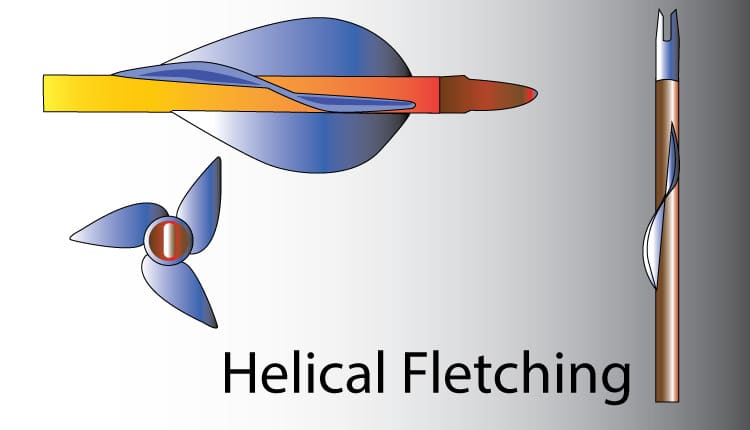
Advantages Of Using Helical Fletching
- Helical Fletching Offers the best in terms of broadhead stabilization.
- Helical Fletching is the most accurate type of fletching out of the three fletchings.
- Provides the most consistent arrow flight of the three fletching types.
- Helical Fletching is best suited for long range shooting
Drawback Of Using Helical Fletching
- Results in reduced arrow velocity while in flight.
- Helical Fletching may not be compatible with the most common arrow rests.
Different Types Of Arrow Fletching Based on Vane Material
Arrow fletchings can also be classified based on the material used to make the vane. There are two materials used to make vanes, plastic and feathers. Let’s look at what each material offers.
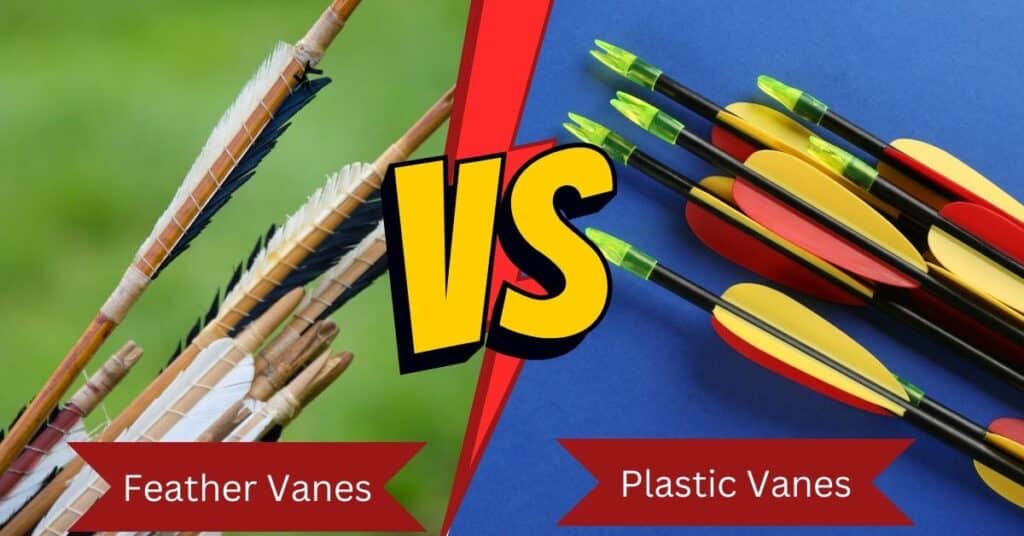
Plastic Vanes
These are the most common and are made from a soft plastic material. This material is flexible and durable. This means these types of vanes are pretty flexible and easily fit into arrows. They can also withstand abuse and harsh weather.
They are also cheaper to buy and maintain. However, they are not without their faults. Compared to feathers, plastic vanes are quite heavy. Also, their flat surface does not do as good a job stabilizing the arrows as feather fletchings.
Feather Vanes
Feather vanes are the original vanes. Feathers, typically turkey feathers, are incredibly light, which translates to faster flying arrows. In addition, due to their rough texture, they offer more stabilization compared to plastic vanes.
The main downside to feather vanes is their cost. These cost almost four times as much as plastic vanes. They are also a bit scarce as they are not as easy to mass produce as plastic ones. Furthermore, they require more maintenance than plastic vanes.
Choosing The Right Fletching
So what should you consider when selecting fletchings for your arrows? There are several things to consider, the main ones being
The Surface Area
How big are the fletchings? The size of the fletchings will depend on what kind of bow you are using. For example, a large 4 to 5-inch fletching will make more sense for a big fixed-blade broadhead shot by a traditional shooter.
For a modern compound bow, though, big fletching will be unnecessary. For this setup, you will want to get a 2 to 3-inch fletch.
The Weight
How heavy the fletchings are will contribute to the arrow velocity. If speed is essential to you, a lightweight fletch will be ideal. This is where feather vanes shine. However, if speed is not critical, plastic vanes will do just fine. The difference in speed between a 4-inch and a 3-inch fletch is about 6 to 8 FPS, not as significant.
Type Of Fletching
What type of fletching should you pick, straight, offset, or helical? For most modern applications, hunting included, you want to go for helical fletching. This type offers incredible stabilization at longer distances.
It is also more accurate. In the real world, accuracy is often more important than speed. Thus, while the arrow’s velocity will be reduced, the accuracy makes up for it. These types of fletchings are ideal for indoor shooting as well.
The Type of Adhesive Used
Glue is typically used to attach fletchings to the arrow. The type of glue you use will also impact the effectiveness of the arrow. The solvent type of adhesive takes longer to bond and dry. However, they offer the most secure bond to withstand different weather conditions.
For outdoor use, avoid using Cyanoacrylate glues as they are typically brittle and can easily lead to the vane breaking free in different weather conditions.
Conclusion
Arrow fletchings come in various types, sizes, and shapes. The one you pick will impact how effective your arrows are. These components help stabilize the arrow while in flight, making it fly in a straight line, which is critical for accuracy.

About The Author:
Lake Streeter, A Gun enthusiast, and loves to hunt in the middle of the wood. Always check the latest hunting gears out in the market and try to share his honest opinion with the audience in Hunting Nook.
